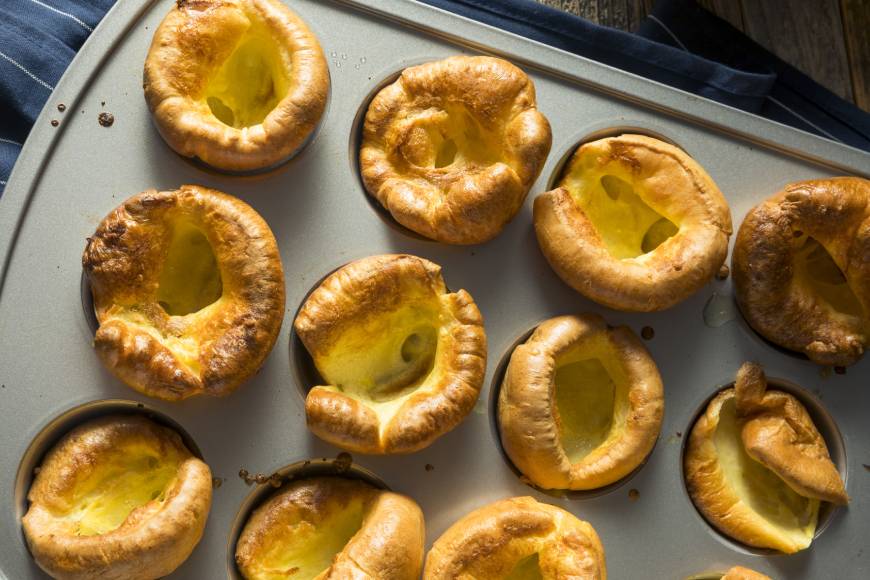No Sunday roast is complete without a Yorkshire Pudding, and yet we know remarkably little about its history. Most assume it comes from Yorkshire, judging by the name, but there’s no certifiable evidence that that’s the case.
However, it is thought they were traditionally served as a cheap way to bulk up a meal, or to fill you up before the main course, meaning not so much (expensive) meat would be needed.
In its earliest incarnations, it’s been recorded as a “dripping pudding” as it was cooked beneath roasting meat in order to catch the precious drippings (melted fat). In 1737 book The Whole Duty Of A Woman, Sir Alexander William George Cassey gives the recipe for a perfect dripping pudding, instructing you you to make a pancake batter, heat a pan over a fire with a little butter, pour in the batter and cook beneath a shoulder of mutton.















